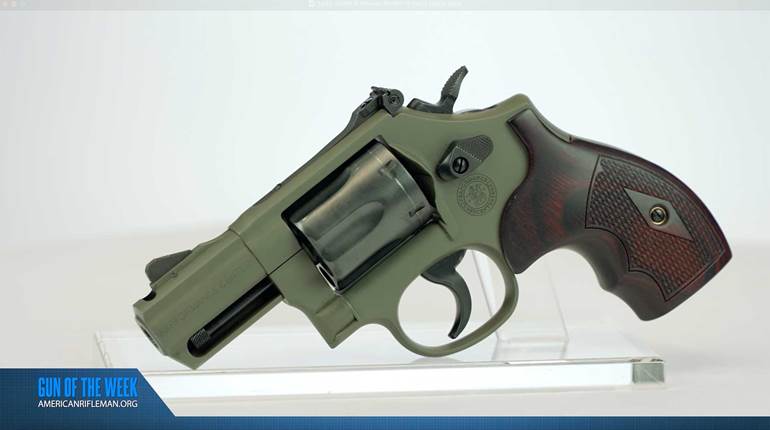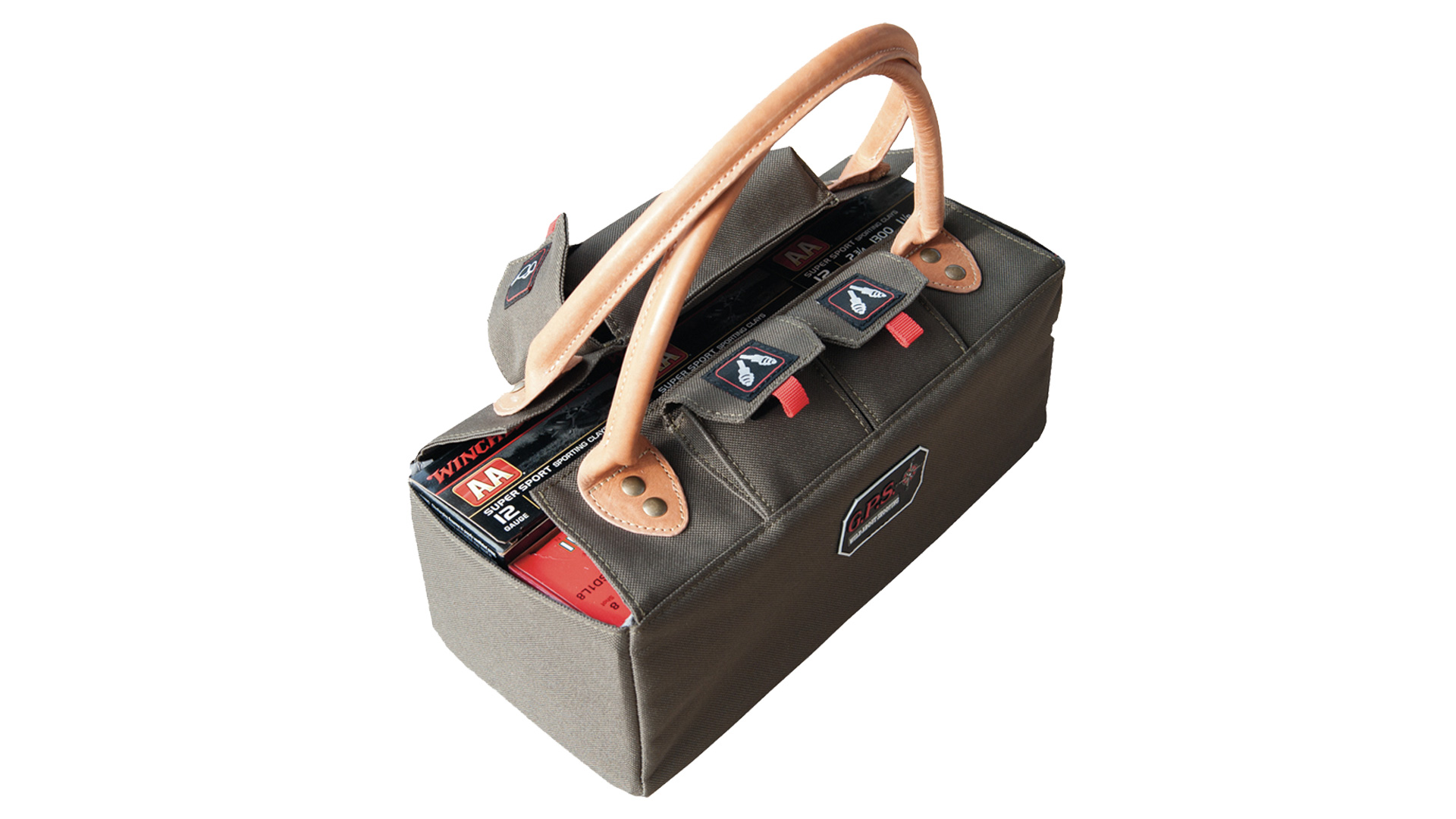
This is not really a new subject, but it is one that somehow falls through the cracks and needs to be relearned every 15 years or so. Since some of the material I am going to present is controversial, let's understand that it is my opinion. I will not spend my time and the editor's ink endlessly qualifying everything I say. But I believe that I can make a strong case for a particular class of firearm as a near ideal concealed carry/personal defense handgun. I am talking about the hammerless revolver.
Yes, I know, they do have hammers, but they are internal and cannot be cocked. The “hammerless” moniker goes back a long way, far enough that it persists in the jargon of the pistolero. How far back? Well, some soldiers of the Civil War era were armed with a large caplock service revolver called the Pettengill. The internal hammer on this revolver could not be accessed by the shooter and did not need a spur. Trigger pressure was routed to turn the cylinder via a hand and the hammer fell to fire the gun. I know of no earlier hammerless repeating handgun, but this gun type was everywhere in the Frontier era and well into the 20th century.
There is the oft-repeated story of the elder Wesson hearing the tragic story of a young child's accidental discharge. He ordered the boys in the tool room to build a hammerless that only adult hands could fire. This gun—called the New Departure Safety Hammerless—was the best known American gun of the breed, but others came from Germany, England, Belgium, France, Russia and probably other places. I have handled and fired Harrington & Richardsons and Iver Johnsons and have in my collection American guns from Sedgely and American Arms. Nevertheless, the magnificently made Smith & Wessons, complete with fitted grip safety, and flawless finish, are the guns most commonly associated with the early hammerless breed. They remained in the catalog right up to the outbreak of World War II. Made in two sizes for two calibers (.32 S&W and .38 S&W) and a number of different barrel lengths, the so-called “Lemon Squeezers” were popular gentleman's guns. They were replaced in the S&W line in the early '50s. It was at the instigation of Rex Applegate, whose .38 failed in a critical moment. It was ammo failure—the gun worked just fine. 
He asked Doug Wesson to build a Hand Ejector type, solid frame hammerless .38 Spl. That gun was introduced as the Model 40 in steel and Model 42 in aluminum frames. This was the beginning of the modern hammerless. In the years since, the gun was out of print for a while, but returned by popular demand. Small and powerful J frame 5-shots are real bread'n butter guns, and the Centennials, as the hammerless ones are called, sell very well. Technology gave the hammerless S&Ws a big shot in the arm with metallurgical advances that permitted the use of .357 ammunition and then even better, lightweight frames made of scandium-aluminum alloy.

Other gunmakers have noted the popularity of this class of firearm and followed suit. In the 50s and 60s for example, Colt firearms was making small snubby .38s with both steel and aluminum frames. Colts are always popular and both the Dick Special and Cobra could be fitted with a removable hammer shroud that made the gun into a sort of hammerless.
Today, there are three makers who offer one or more versions of the hammerless snubby. Smith & Wesson, who pretty much put the hammerless on the map, still makes the gun in several calibers and many variations. They even offer the Bodyguard, a gun with most of the contours of the Centennial, which also has an integral laser. Best yet, a good bit of the structure of the little Bodyguard is the new wonder material for gun making—polymer. 
Apparently, there is enough interest in the hammerless revolver concept that Taurus makes the CIA (Carry It Anywhere), a S&W Centennial look-a-like. They also have the 605 Polymer. Even Ruger, the giant handgun maker, has a version of the LCR (Light, Compact Revolver) that is essentially hammerless. All of these hammerless models are variations on their company's small frame .38 or .357 with short barrel. Suffice it to say there are abundant choices in the hammerless market—why am I high on the concept?
Because it is practical. As a defensive gun that is not likely to be used at much range, the hammerless is well suited to the speed inherent in a DA trigger for every shot. You simply don't need to cock a small revolver to engage a human target inside of the popular 7 yards. If you don't need to cock the hammer, why do you need the means of doing so? The next question would have to be: What do you gain by enclosing the lockwork?
The first response is that you keep all manner of pocket debris from getting into the mechanism. I know that the traditional (and prudent) practice is to maintain one's defensive firearm with meticulous care. Not everyone does and that's just human nature. If you form the habit of always slipping the carry gun into your pocket when you leave home, it becomes a habit and habits rule our lives. Try to make maintenance as much of a habit, but using a hammerless just hedges your bet a bit.
Enclosing the lockwork also gives you a better shape for handling. Assuming that you're going with a snubby revolver, consider what the pronounced hook-like shape of the hammer prevents in the way of a speedy presentation. Murphy always attends these crises and if the hammer can snag on coat lining, belt, suspenders or most commonly, pocket edge—well then, it will. The hammerless slides smoothly in and out of locations that would stop a hammered pistol. Many shooters of older times solved this problem by simply removing the hammer spur, which is a pretty good trick.
Habitually carried revolvers will spend all day under your normal clothing. Even though you have done the right thing and obtained the appropriate paperwork, you don't want to have the outline of the gun printing through clothing—it is socially unacceptable. Most commonly, this happens when warm summer weather sees us wearing light clothing. A hammerless hides easier, but many believe that the inherently flat nature of an automatic makes it easier yet to conceal, because of the lump in the middle of a revolver. I did a bunch of comparative testing once a long time ago. The profile of an automatic pistol is invariably two straight lines intersecting at a slight angle. I came up with the admittedly un-scientifically established opinion that small revolvers have an edge over similar sized autos. That edge is really in concealability, maneuverability and a much simpler system of operation. In terms of ballistic performance, it is pretty much a toss-up between the most popular small auto cartridge (9 mm Luger) and the most popular small revolver round (.38 Spl). I think the .38 Spl has a couple of advantages over the 9 mm.
I am fond of the little wheelguns and used them often in a law enforcement career. Generally, the revolver is fading in popularity, with little guns hanging in pretty well. In my opinion, the hammerless variants are the best way to go. And yes, I do use one chambered in .357 Magnum, knowing full well that it will hurt to shoot. There is no doubt but that the Magnum is better than the 9 mm.





































